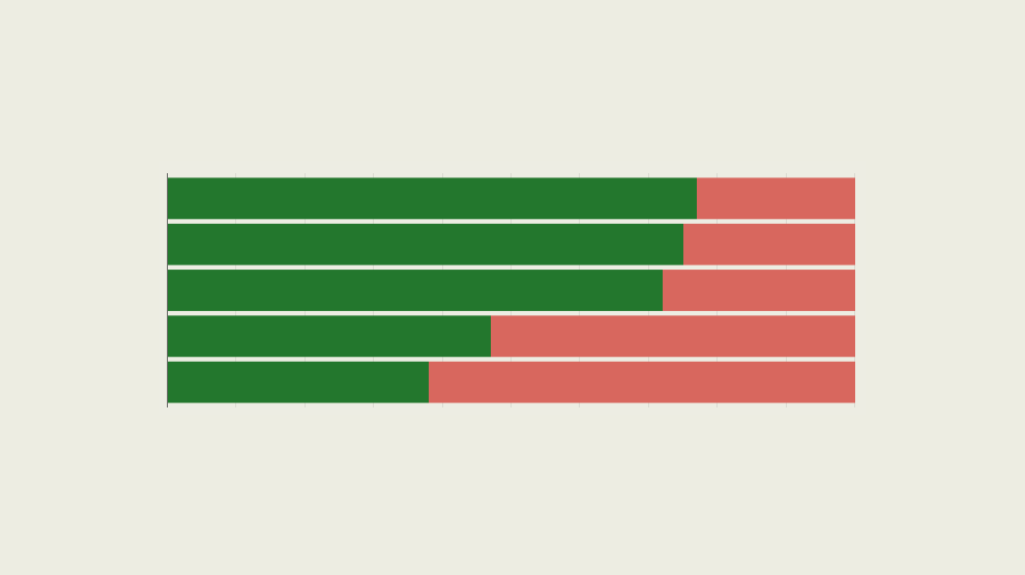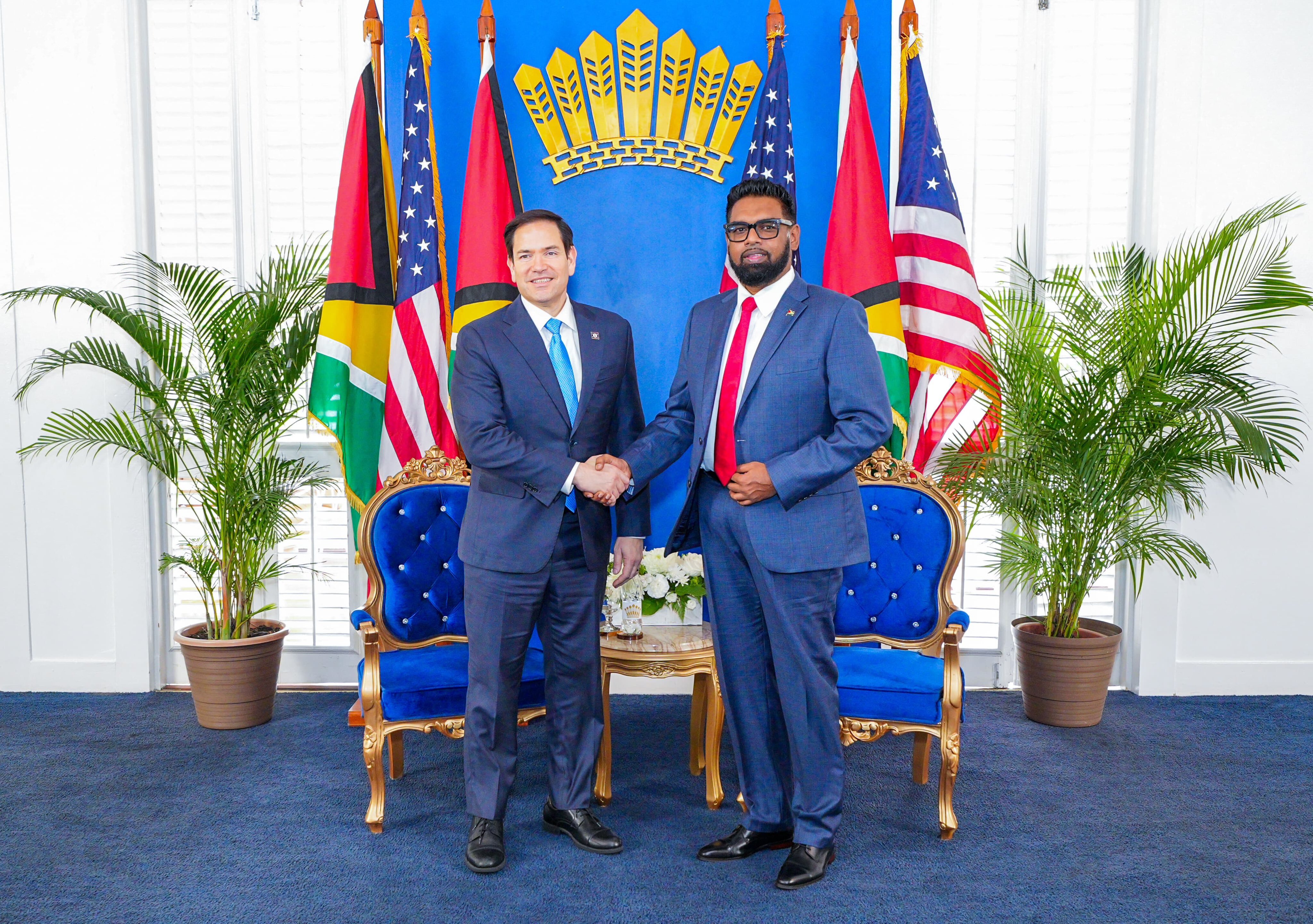Update: The U.S.-Colombia Free Trade Agreement Turns Five
Update: The U.S.-Colombia Free Trade Agreement Turns Five
Despite an oil price drop and bilateral trade slump, more Colombian companies are exporting to the United States than before.
On May 15, 2012, Colombia kicked off implementation of a long-delayed free-trade accord with Washington by sending a U.S.-bound planeload of flowers. The bilateral deal slashed over 80 percent of tariffs, decreased barriers to trade, and provided investment and procurement assurances to foreign investors. By 2020, all remaining tariffs are set to be phased out.
Five years on, the agreement’s potential is yet to be fulfilled as the 2014 fall in the price of oil, a top export for Colombia, cut into much of the gains achieved during the deal’s early years. Nonetheless, the United States remains Colombia’s top trading partner.
One step forward, two steps back
The U.S. International Trade Commission projected in 2006 that the bilateral agreement would add $1.1 billion to American exports headed south, and another $500 million to imports from Colombia. Initially, U.S. exports did even better, growing by an average of $1.9 billion per year from 2012 to 2014.
But, in 2014, falling oil prices took a toll on Colombia’s commodity-dependent economy, and therein its budget for U.S. goods. Just before the drop, oil made up more than half of Colombia’s export revenues and the government is now functioning on an estimated $1.1 billion in yearly oil revenues, down from $6.7 billion in 2014.
Colombian spending on American goods is also down, from $24.6 billion in 2012 to $13.8 billion last year. While U.S. exports to Colombia were at similar levels last year as they were in 2012, they dropped by $3.2 billion from 2015 to 2016. Total bilateral trade in 2016 stood at $26.9 billion, well below the 2012 level of $41.0 billion.
Areas of growth
Nonetheless, while the volume of trade is down, other aspects of the bilateral trade relationship are stronger. Before the trade agreement was implemented, the U.S. market share in Colombia was in decline, dropping to 24 percent in 2012. Since the agreement’s implementation, there’s been a turnaround, with U.S. exports regaining a 29-percent market share from a decade ago.
The agreement has also enabled Colombia’s exports to diversify away from the energy sector. Even though overall exports are down, the number of domestic companies with exports to the United States rose from 1,930 in 2012 to 2,201 in 2015, per ProColombia, Colombia’s investment promotion agency. Some 97 percent of these companies are part of non-energy sectors, such as agriculture, manufacturing, and pharmaceuticals.
Investor confidence has also improved since the agreement came into effect. U.S. FDI grew from $2.3 billion in 2011 to $2.9 billion in 2013, representing about 14 percent of Colombia’s total FDI.
The slowdown in the U.S.-Colombia bilateral relationship also correlates with a slowdown in global trade and Colombia’s structural dependency on international markets. Without the trade agreement, it’s possible that the impact of low commodity prices on bilateral trade levels would have been steeper.
The future nature of the U.S.-Colombia relationship
The success of the trade agreement rests on the strength of the U.S.-Colombia relationship. U.S. President Donald Trump, who has been critical of other trade agreements during his presidency, has not publicly mentioned the FTA with Colombia and members of his administration say they favor bilateral trade deals over multilateral agreements like the North American Free Trade Agreement.
But the U.S.-Colombia relationship is at a critical juncture. Colombia remains one of the strongest U.S. partners in the region. In the past, ties centered on security and development assistance. Plan Colombia delivered $10 billion in U.S. military and social funding to Colombia between 2000 and 2015.
Former U.S. President Barack Obama renewed his commitment to the relationship in the final year of his presidency, agreeing to a new plan—dubbed Peace Colombia—that involved a comprehensive aid package allocating $450 million of the U.S. FY 2017 budget to development and security aid programs aimed specifically at supporting post-conflict Colombia. The commitment would represent a significant increase from current aid levels, which are around $300 million annually, but would be far from its Plan Colombia high of $700 million per year. The European Union, for its part, has pledged Colombia aid of $127 million per year for five years.
U.S. financial and technical assistance represent essential resources for the Colombian government as it implements its peace deal with the Revolutionary Armed Forces of Colombia, known as the FARC. Implementing the deal’s disarmament, demobilization, and reintegration of FARC combatants, as well as the restructuring of rural areas and landmine removal programs, will incur high monetary costs.
But Trump’s commitment to Colombia remains unknown; Funding for Peace Colombia was missing from his first budget proposal for FY 2018. Meanwhile, the U.S. Congress authorized $391 million in U.S. assistance to Colombia in the continuing budget resolution passed in early May, which funds the government through September 30.









